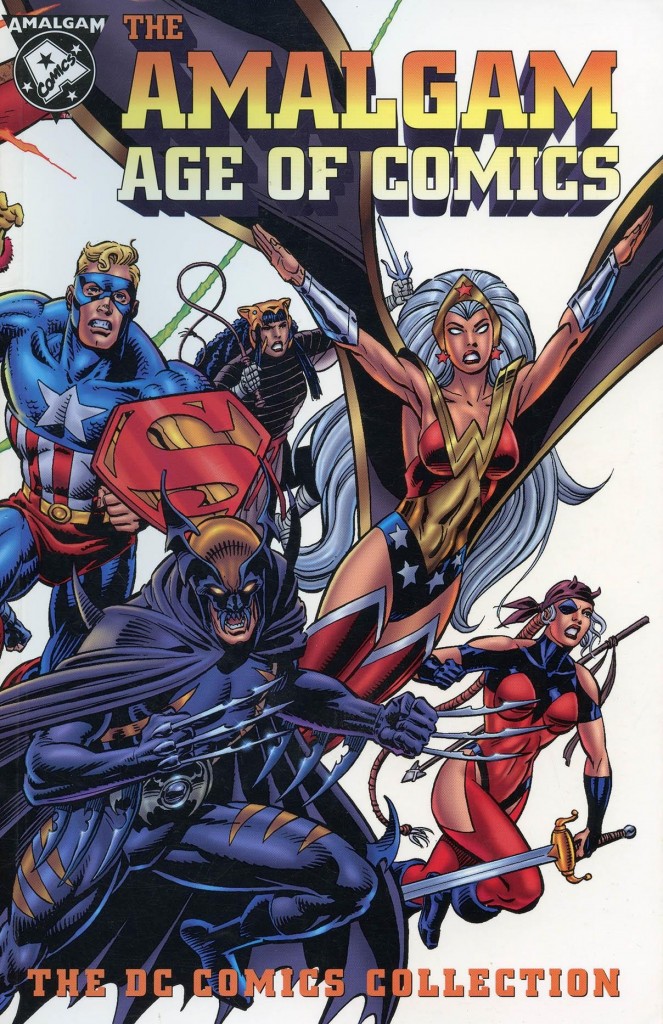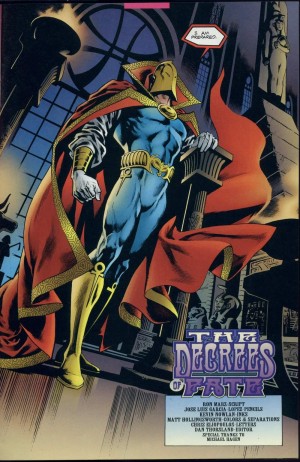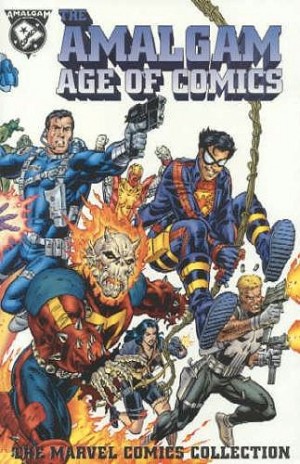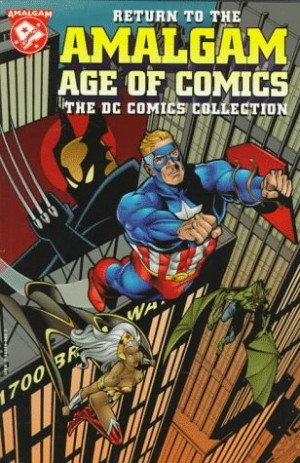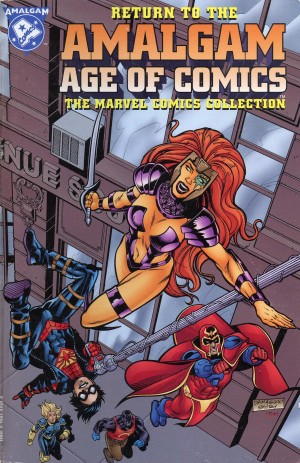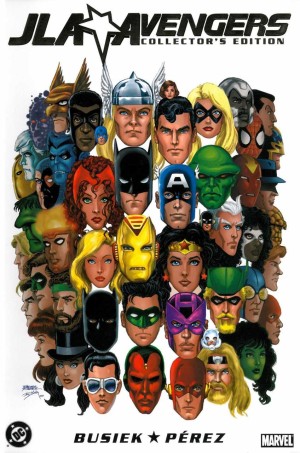Review by Ian Keogh
During the 1990s a renewed period of detente between the USA’s major publishers of superhero comics resulted not only in the long delayed Avengers/JLA but in a pair of graphic novels in which their characters were merged together. New hybrid creations appeared in one-offs featuring the combined attributes of a single Marvel character and single DC character, and each publisher issued two collections.
Flicking through the pages indicates how the art traverses the scale from the sublime to the ridiculous. The elegance and consummate storytelling of Dave Gibbons and José Luis García-López (sample art) is contrasted by the exploitative objectification of Jim Balent and Scott McDaniel, reminding us just how sleazy superhero comics featuring women could be in the 1990s.
Beyond the idea of creating hybrid superheroes, there’s little imagination at work. Larry Hama’s script for the mushing of Batman and Wolverine (Dark Claw) reads as if he’s unable to take the idea at all seriously, so follows the style of the 1960s Batman TV show, and Balent’s distorted art is grim. His crimes against female anatomy are equalled by McDaniel whose ‘Assassins’ teams a combination of Daredevil and Deathstroke, now female, with a combination of Elektra and Catwoman. D. G. Chichester and McDaniel once produced readable Daredevil comics, and the decent layouts reflect that, but this is otherwise mediocre page filler. The Justice League and X-Men come together as JLX, which unites characters seen in other stories. Super Soldier, looks far better when illustrated by Gibbons in his own strip than Howard Porter’s gritted teeth clod for JLX. Mark Waid and Gerard Jones’ script pits one set of heroes against their former team mates, but surely neither writer lists this among their greatest achievements.
Much the same applies to John Byrne’s merging of Storm and Wonder Woman for Amazon, but while it’s a perfunctory piece of scripting with a lazy ending it at least has the benefit of Byrne’s solid storytelling. And his pencils always look good when inked by Terry Austin, as do Stuart Immonen’s.
In terms of presentation there’s little to differentiate Dr Strangefate from Marvel’s Doctor Strange and DC’s Doctor Fate. Both are master magicians who maintain a distinctive sanctum with someone to aid them. Even their costumes join at the seams as presented by Garcia-Lopez, and were it not for sharing their page allocation with other merged heroes Ron Marz’s story would happily fit either character individually. There are a few nice touches (Bruce Banner’s alternate persona for one), but they’re balanced by horrible misjudgements such as the sexual predator’s character supplied to the combination of Scarlet Witch and Zatanna. It’s the art that’s the star here. Garcia-Lopez has always given the poorest scripts he illustrates a false sophistication, and while not quite poor, he works astonishingly well with what he’s given.
Only one strip provides an entirely satisfying combination of story and art. Waid and Gibbons’ Super Soldier is thoroughly entertaining. The combination of Captain America and Superman extends beyond just a fused hero and their enemies to the smooth merging of supporting casts, origins and backgrounds. Although set in the present day (or the 1990s), both creators treat the story as if a 1940s pastiche, yet while there’s a simplicity to matters, they’re not simplistic.
Sales determined a second run for the Amalgam superheroes, and DC’s next presentation is Return to the Amalgam Age of Comics.
